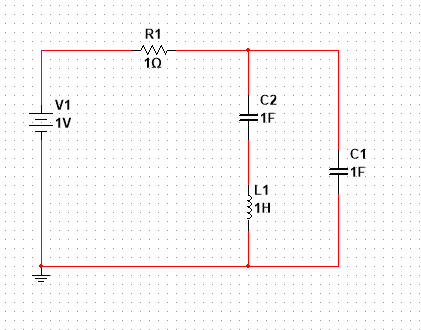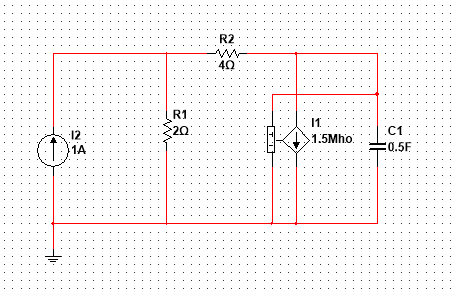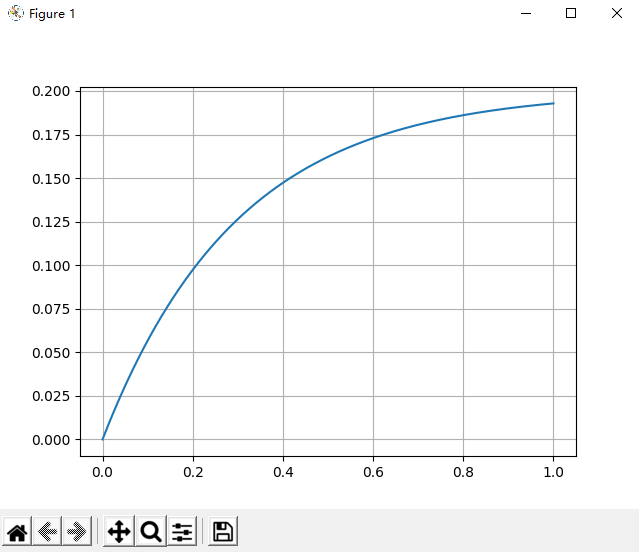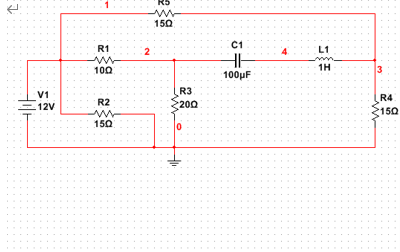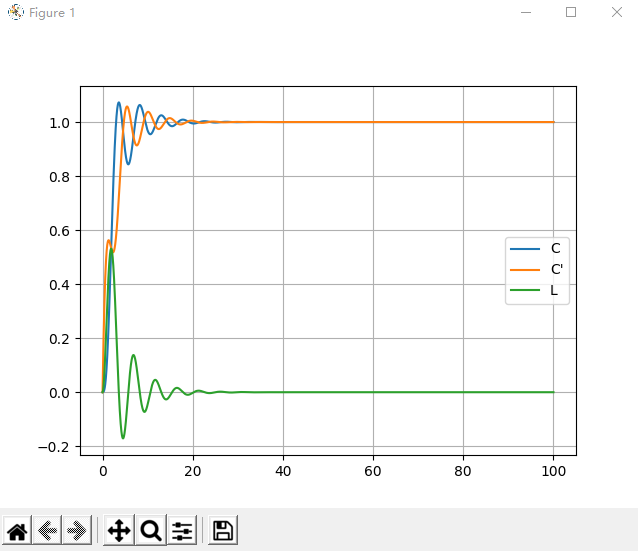1
2
3
4
5
6
7
8
9
10
11
12
13
14
15
16
17
18
19
20
21
22
23
24
25
26
27
28
29
30
31
32
33
34
35
36
37
38
39
40
41
42
43
44
45
46
47
48
49
50
51
52
53
54
55
56
57
58
59
60
61
62
63
64
65
66
67
68
69
70
71
72
73
74
75
76
77
78
79
80
81
82
83
84
85
86
87
88
89
90
91
92
93
94
95
96
97
98
99
100
101
102
103
104
105
106
107
108
109
110
111
112
113
114
115
116
117
118
119
120
121
122
123
124
125
126
127
128
129
130
131
132
133
134
135
136
137
138
139
140
141
142
143
144
145
146
147
148
149
150
151
152
153
154
155
156
157
158
159
160
161
162
163
164
165
166
167
168
169
170
171
172
173
174
175
176
177
178
179
180
181
182
183
184
185
186
187
188
189
190
191
192
193
194
195
196
197
198
199
200
201
202
203
204
205
206
207
208
209
210
211
212
213
214
215
216
217
218
219
220
221
222
223
224
225
226
227
228
229
230
231
232
233
234
235
236
237
238
239
240
241
242
243
244
245
246
247
248
249
250
251
252
253
254
255
256
257
258
259
260
261
262
263
264
265
266
267
268
269
270
271
272
273
274
275
276
277
278
279
280
281
282
283
284
285
286
287
288
289
290
291
292
293
294
295
296
297
298
299
300
301
302
303
304
305
306
307
308
309
310
311
312
313
314
315
316
317
318
319
320
321
322
323
324
325
326
327
328
329
330
331
332
333
334
335
336
337
338
339
340
341
342
343
344
345
346
347
348
349
350
351
352
353
354
355
356
357
358
359
360
361
362
363
364
365
366
367
| import tkinter as tk
import matplotlib.pyplot as plt
import numpy as np
from scipy.integrate import odeint
K=[[[0 for i in range(100)] for j in range(100) ] for h in range(100)]
A=[[[0.0 for i in range(100)] for j in range(100) ] for h in range(100)]
link=[([0]*100)for i in range(100)]
conx=[[[0 for i in range(100)] for j in range(100) ] for h in range(100)]
cony=[[[0 for i in range(100)] for j in range(100) ] for h in range(100)]
L=[([0.0]*100)for i in range(100)]
l=[([0.0]*100)for i in range(100)]
R=[0.0 for i in range(100)]
r=[0.0 for i in range(100)]
num=[([0]*100)for i in range(100)]
tmpa=[0.0 for i in range(100)]
tmpk=[0 for i in range(100)]
n=0
flag=0
cnt=0
eps=0.00000001
foot=0.001
captot=0
restot=0
res=[0.0 for i in range(100)]
cap=[0.0 for i in range(100)]
tot=0
p1=0
p2=0
uoc=0
req=0
tmp=0
binglian=0
def rec():
for i in range(1,n+1):
R[i]=0.0
for j in range(1,n+1):
L[i][j]=0.0
for i in range(1,n):
global flag
flag=0
for j in range(1,n+1):
x=min(i,j)
y=max(j,i)
if flag:
break
if link[i][j]==0:
continue
for h in range(1,num[i][j]+1):
if K[h][i][j]==-1:
flag=1
cx=conx[h][i][j]
cy=cony[h][i][j]
if K[1][cx][cy]==2:
for q in range(1,n+1):
L[i][q]=0
L[i][x]+=1
L[i][y]-=1
R[i]=A[h][i][j]*A[1][cx][cy]
break
if K[1][cx][cy]==3:
for q in range(1,n):
L[i][q]=0
L[i][x]+=1
L[i][y]-=1
L[i][cx]-=1/A[1][cx][cy]*A[h][i][j]
L[i][cy]+=1/A[1][cx][cy]*A[h][i][j]
R[i]=0
break
if K[h][i][j]==-2:
cx=conx[h][i][j]
cy=cony[h][i][j]
L[i][cx]+=A[h][i][j]
L[i][cy]-=A[h][i][j]
if K[h][i][j]==1:
flag=1
for p in range(1,n+1):
L[i][p]=0
L[i][x]=1
L[i][y]=-1
R[i]=A[h][i][j]
break
if K[h][i][j]==2:
R[i]+=(int(i>j)*2-1)*A[h][i][j]
if K[h][i][j]==3:
L[i][i]+=1.0/A[h][i][j]
L[i][j]-=1.0/A[h][i][j]
for i in range(1,n):
L[n][i]=0
L[n][n]=1
def solve():
for i in range(1,n+1):
r[i]=R[i]
for i in range(1,n+1):
for j in range(1,n+1):
l[i][j]=L[i][j]
for i in range(1,n+1):
if abs(l[i][i])<=eps:
for j in range(i+1,n+1):
if abs(l[j][i])>eps:
for k in range(1,n+1):
t=l[i][k]
l[i][k]=l[j][k]
l[j][k]=t
break
if(abs(l[i][i])<=eps):
continue
t=l[i][i]
for j in range(i,n+1):
l[i][j]/=t
r[i]/=t
for j in range(i+1,n+1):
t=l[j][i]
for k in range(i,n+1):
l[j][k]-=l[i][k]*t
r[j]-=r[i]*t
for i in range(n,0,-1):
for j in range(i-1,0,-1):
r[j]-=l[j][i]*r[i]
l[j][i]=0.0
def paint():
if tot==1:
def diff_equation(y,x):
return np.array((uoc-y)/(req*cap[captot]))
x=np.linspace(0,1,num=1000)
result=odeint(diff_equation,0,x)
plt.plot(x,result[:,0])
plt.grid()
plt.show()
if tot==2:
def diff_equation21(y_list,x):
y,z=y_list
return np.array([z,(uoc-y-req*cap[captot]*z)/(res[restot]*cap[captot])])
def diff_equation22(y_list,x):
y,z=y_list
return np.array([((uoc-y)/req-z)/cap[captot],y/res[restot]])
x=np.linspace(0,0.5,num=1000)
y0=[0,0]
if binglian==1:
result=odeint(diff_equation22,y0,x)
else :
result=odeint(diff_equation21,y0,x)
plt.plot(x,result[:,0],label='U_c')
plt.plot(x,result[:,1],label='I_l')
plt.legend()
plt.grid()
plt.show()
if tot==3:
def diff_equation3(y_list,x):
y,z,w=y_list
return np.array([w,((uoc-z)/req-cap[1]*w)/cap[2],(z-y)/(res[1]*cap[1])])
x=np.linspace(0,100,num=100000)
y0=[0,0,0]
result=odeint(diff_equation3,y0,x)
plt.plot(x,result[:,0],label='U_c2')
plt.plot(x,result[:,1],label='U_c1')
plt.plot(x,result[:,2],label='I_l')
plt.legend()
plt.grid()
plt.show()
def window2():
window = tk.Tk()
window.geometry("500x300")
window.title("Second Window")
lb1 = tk.Label(window, text="节点一")
lb1.grid(column=0, row=0)
s1 = tk.StringVar()
txt1 = tk.Entry(window, width=12,textvariable=s1)
txt1.grid(column=0, row=1)
lb2 = tk.Label(window, text="节点二")
lb2.grid(column=1, row=0)
s2 = tk.StringVar()
txt2 = tk.Entry(window, width=12,textvariable=s2)
txt2.grid(column=1, row=1)
lb3 = tk.Label(window, text="元件类型")
lb3.grid(column=2, row=0)
s3 = tk.StringVar()
txt3 = tk.Entry(window, width=12,textvariable=s3)
txt3.grid(column=2, row=1)
lb4 = tk.Label(window, text="参数大小")
lb4.grid(column=3, row=0)
s4 = tk.StringVar()
txt4 = tk.Entry(window, width=12,textvariable=s4)
txt4.grid(column=3, row=1)
lb5 = tk.Label(window, text="电压源即1,电流源即2,受控电压源为-1,受控电流源即-2,电阻即3")
lb5.grid(columnspan=8,row=5)
lb6 = tk.Label(window, text="注意输入时参数时须保证电流正方向为从小节点编号到大节点编号,电压正极为小编号")
lb6.grid(columnspan=10, row=6)
def check():
global cnt
cnt+=1
u=int(txt1.get())
v=int(txt2.get())
p=int(txt3.get())
w=float(txt4.get())
num[u][v]+=1
num[v][u]+=1
if p<0:
window = tk.Tk()
window.geometry("350x200")
window.title("输入控制源")
lb31 = tk.Label(window, text="节点一")
lb31.grid(column=0, row=0)
s31 = tk.StringVar()
txt31 = tk.Entry(window, width=10,textvariable=s31)
txt31.grid(column=0, row=1)
lb32 = tk.Label(window, text="节点二")
lb32.grid(column=1, row=0)
s32 = tk.StringVar()
txt32 = tk.Entry(window, width=10,textvariable=s32)
txt32.grid(column=1, row=1)
def scan():
x=int(txt31.get())
y=int(txt32.get())
conx[num[u][v]][u][v]=min(x,y)
conx[num[u][v]][v][u]=min(x,y)
cony[num[u][v]][u][v]=max(x,y)
cony[num[u][v]][v][u]=max(x,y)
window.quit()
button31 = tk.Button(window, text='记录',width=10,command=scan)
button31.grid(row=3, column=3)
window.mainloop()
link[u][v]=1
link[v][u]=1
K[num[u][v]][u][v]=p
K[num[u][v]][v][u]=p
A[num[u][v]][u][v]=w
A[num[u][v]][v][u]=w
txt1.delete(0, 'end')
txt2.delete(0, 'end')
txt3.delete(0, 'end')
txt4.delete(0, 'end')
if cnt==m:
global uoc
global req
link[p1][p2]=1
link[p2][p1]=1
num[p1][p2]+=1
num[p2][p1]+=1
K[num[p1][p2]][p1][p2]=2
K[num[p1][p2]][p2][p1]=2
A[num[p1][p2]][p1][p2]=0
A[num[p1][p2]][p2][p1]=0
rec()
solve()
uoc=r[p1]-r[p2]
K[num[p1][p2]][p1][p2]=3
K[num[p1][p2]][p2][p1]=3
A[num[p1][p2]][p1][p2]=1
A[num[p1][p2]][p2][p1]=1
rec()
solve()
u1=r[p1]-r[p2]
req=uoc/u1-1
paint()
button1 = tk.Button(window, text='记录',width=10,command=check)
button1.grid(row=7, column=7)
window.mainloop()
tmp=0
def window3():
window = tk.Tk()
window.geometry("500x300")
window.title("Second Window")
lb3 = tk.Label(window, text="元件类型")
lb3.grid(column=0, row=0)
s3 = tk.StringVar()
txt3 = tk.Entry(window, width=12,textvariable=s3)
txt3.grid(column=0, row=1)
lb4 = tk.Label(window, text="参数大小")
lb4.grid(column=1, row=0)
s4 = tk.StringVar()
txt4 = tk.Entry(window, width=12,textvariable=s4)
txt4.grid(column=1, row=1)
lb5 = tk.Label(window, text="电容即1,电感即2")
lb5.grid(column=0, row=2)
def check():
global tot
global captot
global restot
global tmp
global binglian
tmp+=1
p=int(txt3.get())
w=float(txt4.get())
if p==1:
captot+=1
cap[captot]=w
if p==2:
restot+=1
res[restot]=w
txt3.delete(0, 'end')
txt4.delete(0, 'end')
if tmp==tot:
window.destroy()
button1 = tk.Button(window, text='记录',width=10,command=check)
button1.grid(row=5, column=0)
window.mainloop()
def init():
window = tk.Tk()
window.title("简陋的交互界面T_T")
window.geometry("500x500")
lbl = tk.Label(window, text="请输入总节点数(除去电容电感支路)")
lbl.grid(columnspan=6, row=0)
s = tk.StringVar()
txt = tk.Entry(window, width=10,textvariable=s)
txt.grid(column=7, row=0)
lbl2 = tk.Label(window, text="请输入总支路数(除去电容电感支路)")
lbl2.grid(columnspan=6, row=1)
s2 = tk.StringVar()
txt2 = tk.Entry(window, width=10,textvariable=s2)
txt2.grid(column=7, row=1)
s5 = tk.StringVar()
txt5 = tk.Entry(window, width=12,textvariable=s5)
txt5.grid(column=7, row=2)
lb6 = tk.Label(window, text="求解支路中有并联即输入1,无并联即输入0")
lb6.grid(columnspan=6, row=2)
lb21 = tk.Label(window, text="节点一")
lb21.grid(column=0, row=3)
s21 = tk.StringVar()
txt21 = tk.Entry(window, width=10,textvariable=s21)
txt21.grid(column=0, row=4)
lb22 = tk.Label(window, text="节点二")
lb22.grid(column=1, row=3)
s22 = tk.StringVar()
txt22 = tk.Entry(window, width=10,textvariable=s22)
txt22.grid(column=1, row=4)
lb23 = tk.Label(window, text="元件个数")
lb23.grid(column=2, row=3)
s23 = tk.StringVar()
txt23 = tk.Entry(window, width=10,textvariable=s23)
txt23.grid(column=2, row=4)
def clicked():
global n
global m
global tot
global p1
global p2
global binglian
n=(int(txt.get()))
m=(int(txt2.get()))
p1=int(txt21.get())
p2=int(txt22.get())
tot=int(txt23.get())
binglian=int(txt5.get())
window.destroy()
window3()
window2()
btn = tk.Button(window, text="Continue", command=clicked)
btn.grid(column=0, row=5)
window.mainloop()
init()
|
